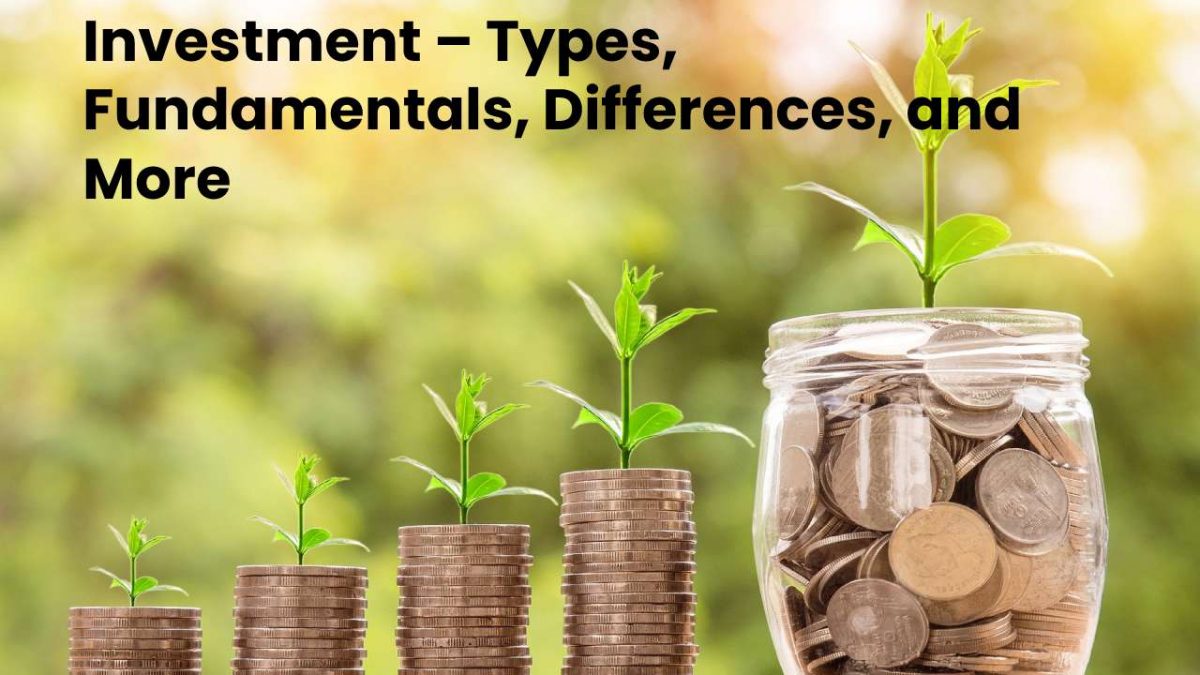Table of Contents
What is meant by investment?
It is an amount of money made available to third parties, such as banks or companies listed on the stock exchange, to obtain benefits from an economic or productive point of view, among others.
In any investment, there are a series of elements that are always frequent. There must be an investor who allocates money to an asset with the opportunity to obtain benefits (subject to some risks) and with the consequent renunciation of its utility or immediate satisfaction. Or short term.
In the first case, investment is considered part of gross capital formation, one of the determining factors in the Gross Domestic Product (GDP) constitution. The goods produces by a nation can destine for internal consumption, export or acquire an investment good. In addition, if you are looking for the examples of fast growth stocks visit kailashconcepts website.
What is an economic investment?
Economic investment is the purchase or upgrade of equipment, machinery, infrastructure or training that can generate benefits above its cost. In short, they are those injections of money that contribute to improving the activity of a company, with the production of more goods and services, for example.
They are also disbursements subject to risk. For example, a company may invest money in training programs for an employee who leaves the job after a few months. In this situation, there is practically no profit.
However, they can be more predictable and controllable risks because economic investments expand the margin of action of whoever puts the money. Some factors depend directly on it.
What is a financial investment?
A financial investment is one in which a financial and intangible asset acquire. That is the purchase of shares, currencies, debt securities, bonds, investment funds or other possibilities with which profits can obtain. In these cases, the return on investment no longer depends on who deposits that money but on the market. These trades are likely to be subject to greater risk but may represent a more significant opportunity.
Types of investments
First, investments classify according to the time they return (yield) is expect to be obtain. You can talk like this:
Temporary investments
Temporary investments refers to invest in fast growth stocks. They usually last for one year and are typically made in high-quality stock, which can sell easily and quickly. Of a transitory type, carried out with the ultimate goal of making the capital surplus of ordinary production productive instead of resting in a bank account.
Long-term investments
They are carried out for more than one year without expecting immediate compensation and maintaining their owner.
Another possible classification distinguishes between public and private investments, depending on the profile of the transaction and the subject that carries it out. Likewise, depending on the destination of the funds, they can be real estate, shares, bonds or currencies.
Fundamentals – Investments

Investments complete the following macroeconomic essentials, the sum of which provides the total investment:
Gross fixed capital formation
One of the macroeconomic concepts measures the value of acquisitions of new and existing fixed assets less the transfers of investments made by the State or the administration in query.
Net fixed capital foundation
It is gotten by discounting the consumption of fixed capital from the gross appearance of fixed capital and represents the value of the funds that have been made available for investment in set properties,
Variation of realities
Calculable by linking stocks at the end of a certain period with their equivalent in a previous year. Similarly, from a microeconomic point of view, we have the elements.
Other elements:
- Expected performance.
- Risk accepted.
- Temporal horizon.
Differences between savings and investment
Saving consists of a postponement of consumption to plan for the future: I stop spending my money today to guarantee myself a more critical purchase tomorrow. In addition, banks reward their clients with a much lower percentage of what they obtain through loans made with their money, thus increasing the client’s wealth contained in a bank account.
On the other hand, investing converts the remaining liquid money into material goods or shares of some promising company, which keeps the price-output ratio intact (and therefore does not depreciate). It is a much more effective way of protecting assets, although there is always the risk of failure of the financial company.
Investment is better than another.
One investment is better than another, or others are frankly brutal. In essence, it will depend on the preferences of each stockholder. Some will consider a return of 50% perfect, and others will settle for 10 per cent.
That said, and keeping in mind that it is not black and white, there are several methods to compare different investments monetarily. For example:
- Internal Rate of Return (IRR).
- Refund.
- Net Present Value (NPV).
- Cash flow discount.
- Return-risk ratios.
- Valuation ratios: ROCE, ROE, ROI, PER or BPA.
There are other methods to compare, but these are the best known and most affordable. Using one or the other will depend, among other things, on the nature of the investments we make.
What can I invest in?
- Many of us have asked ourselves this question and can feel confused when trying to answer it. If you are an inexperienced stockholder, you can start with the basics.
- I invested in a flat to rent or stocks that do not represent a hazardous move. Try bonuses only if you advises and in raw material if you are very sure of what you are doing.
- Financial advice in case of investment is essential.
- But, as we already said, investing in things that will not let you down is improving. You can invest in the best version of the objects you use every day, such as your mobile, clothes or laptop.
- If you invest your money in this type of thing, you will not be risking anything, and you can be sure that they are objects that will last you a long time.
- So there are many cases you can invest in clothes, shoes, even on a trip. If it’s something worth spending money on and not too risky.
- Of course, the things you invest in must last. It is not advisable to invest in a costly dinner or a party that will only stay one night. That is the very reason for the investment: the benefit is in the long term.
- When you already have experience and knowledge, you can take risks and invest like an expert economist. Bonds and stocks will always be available in the market, waiting for an investor.
- But now that you know what types of investments exist, you can risk even more or stay safe. A house, and a car, are investments that rarely go wrong while investing in raw materials can be pretty risky but not impossible.
Conclusion
As its name suggests, investment is the money, time, and dedication we dedicate to something or someone. In the economic field, investment is the financial contribution made to carry out a project. The investment can be individual or joint and responds to many interests. An investment can be buying a house, a car, or opening a commercial business. Therefore, almost all significant economic movements depend on investment.
You should know that not all investments are the same and follow different rules.
As its name suggests, investment is the money, time, and dedication we dedicate to something or someone. In the economic field, investment is the financial contribution made to carry out a project.
You should know that not all assets are the same and follow different rules. The investment can be individual or shared and responds to many interests. An investment can be buying a house, a car, or opening a commercial business. Therefore, almost all significant economic movements depend on investment.

